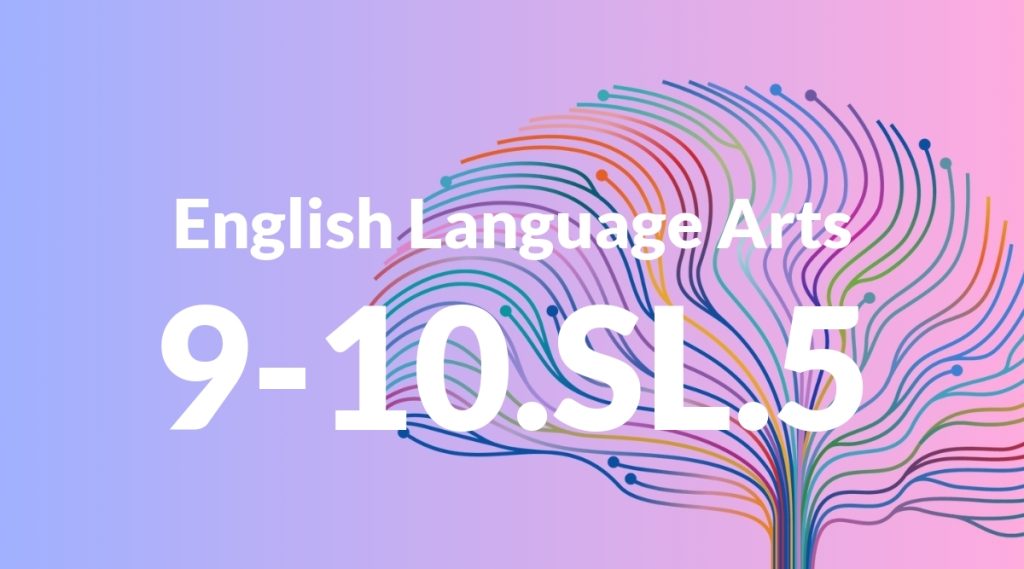Standard: 9-10.SL.5 – Make strategic use of digital media (e.g., textual, graphical, audio, visual, and interactive elements) in presentations to enhance understanding of findings, reasoning, and evidence and to add interest.
Grade level: Grade 9-10
Subject: English Language Arts
Domain: Speaking & Listening
Teacher Overview
This standard emphasizes the strategic use of digital media to enhance presentations. It is crucial for students to learn how to effectively integrate various media elements to support their findings, reasoning, and evidence, making their presentations more engaging and informative. Mastering this standard is essential for students’ success in both academic and real-world settings, where digital literacy is increasingly important. Students should already understand the basics of digital media types and their uses, as well as how to organize and deliver a clear and coherent presentation.
Once students master this standard, they will be able to create presentations that effectively combine strong research with strategic use of digital media, preparing them for advanced academic work and professional communication.
Common Misconception 1
One common misconception is that simply adding more digital media will automatically improve a presentation. This is incorrect because the quality and relevance of the media are far more important than quantity.
Intervention 1
To address this, provide students with criteria for evaluating digital media and have them practice selecting the most effective media for different presentation scenarios.
Common Misconception 2
Another misconception is that digital media can take the place of thorough research and well-constructed arguments. This is a fallacy because digital media should complement and enhance the content, not substitute for it.
Intervention 2
Encourage students to focus on their research and argumentation first, then use digital media to highlight and support their key points.
Prerequisite Knowledge
Students should have a basic understanding of different types of digital media and their purposes, as well as fundamental presentation skills such as organizing content and speaking clearly.
Subsequent Knowledge
After mastering this standard, students will be able to critically evaluate the effectiveness of digital media in various contexts and create more sophisticated and professionally polished presentations.
Instructional Activities
- Analyze examples of effective and ineffective use of digital media in presentations.
- Create a multimedia presentation on a given topic, incorporating various digital elements.
- Peer review presentations with a focus on the use of digital media.
- Work in groups to redesign a basic presentation by adding appropriate digital media.
- Participate in a workshop on digital media tools and techniques.




